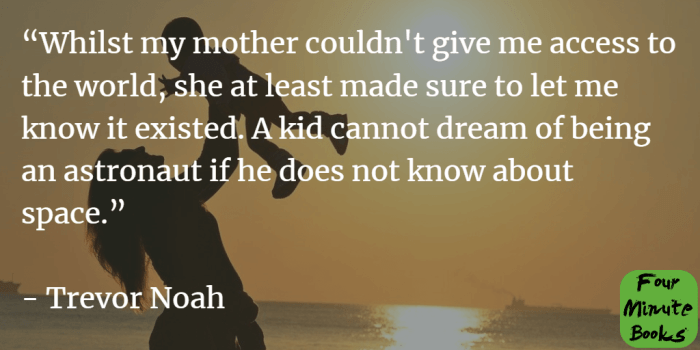Born a Crime Chapter 2 Questions and Answers delves into the intricate tapestry of Trevor Noah’s childhood, providing readers with a profound understanding of the formative experiences that shaped his identity and worldview. Through a series of thought-provoking questions and insightful answers, this chapter offers a deeper exploration into the themes of racial identity, cultural belonging, and the power of humor.
Noah’s poignant storytelling and candid reflections shed light on the complexities of growing up in a racially divided society, the challenges of navigating multiple cultures, and the transformative role of humor in overcoming adversity. By examining the key events, characters, and literary devices employed in Chapter 2, readers gain a comprehensive understanding of Noah’s journey and the enduring impact it has had on his life and work.
Chapter Summary

Chapter 2 of “Born a Crime” introduces young Trevor Noah, a mixed-race boy growing up in post-apartheid South Africa. The chapter explores his family’s complex dynamics, his early experiences with racism, and his struggles to find a sense of belonging.
Key events include Trevor’s encounter with a white police officer who refuses to believe his mother is his mother, his father’s arrest for drug possession, and his mother’s resilience in the face of adversity.
Character Analysis: Trevor Noah
Chapter 2 reveals Trevor Noah as a precocious and observant child. Despite facing discrimination, he develops a strong sense of humor and a deep understanding of the complexities of his society.
His experiences with racism shape his worldview, making him acutely aware of the prejudices that divide South Africa. Yet, he remains optimistic and determined to find a sense of belonging.
Racial Identity and Prejudice
Chapter 2 explores the pervasive nature of racism in South African society. Trevor’s experiences reflect the challenges faced by mixed-race individuals in a society still grappling with its racial past.
The chapter highlights the absurdity and cruelty of apartheid laws, as well as the enduring legacy of prejudice and discrimination.
Cultural Identity and Belonging: Born A Crime Chapter 2 Questions And Answers
Chapter 2 examines the challenges of navigating multiple cultures. Trevor struggles to find a sense of belonging in a society that often categorizes people based on their race.
He experiences both the rewards and challenges of being a “rainbow child,” able to bridge different cultures but also facing the prejudices that come with it.
Humor and Storytelling

Humor plays a vital role in Chapter 2. Trevor uses humor to convey serious messages about racism and prejudice, making them more accessible and relatable to readers.
His storytelling techniques are effective in creating a vivid and engaging narrative, drawing readers into his experiences and perspectives.
Symbolism and Metaphor
Chapter 2 employs various literary devices to enhance its meaning and impact. The “rainbow child” metaphor symbolizes Trevor’s unique identity as a mixed-race individual.
Other symbols, such as the apartheid laws and the police officer’s refusal to believe Trevor’s mother, represent the systemic nature of racism.
Chapter Significance
Chapter 2 is crucial in establishing the foundation of “Born a Crime.” It introduces the main characters and themes, setting the stage for Trevor’s journey of self-discovery and his fight against injustice.
The chapter provides insights into the complexities of racial identity and prejudice, highlighting the importance of humor and storytelling in addressing these issues.
Top FAQs
What is the significance of Trevor Noah’s experiences in Chapter 2?
Chapter 2 of Born a Crime provides crucial insights into Trevor Noah’s childhood, shaping his racial identity, cultural understanding, and worldview. His experiences navigating the complexities of apartheid South Africa and his mother’s resilience in the face of adversity lay the foundation for his later activism and comedic perspective.
How does Noah use humor to convey serious messages in Chapter 2?
Noah’s skillful use of humor in Chapter 2 allows him to address sensitive and challenging topics in a relatable and engaging manner. Through comedic anecdotes and self-deprecating observations, he highlights the absurdities and injustices of racial prejudice, while simultaneously offering a sense of hope and resilience.
What is the role of symbolism in Chapter 2?
Symbolism plays a significant role in Chapter 2, enhancing the narrative’s emotional impact and conveying deeper meanings. Noah employs symbols such as the “rainbow nation” and the “dance of freedom” to represent the complexities of South African society and the aspirations for a more just and equitable future.